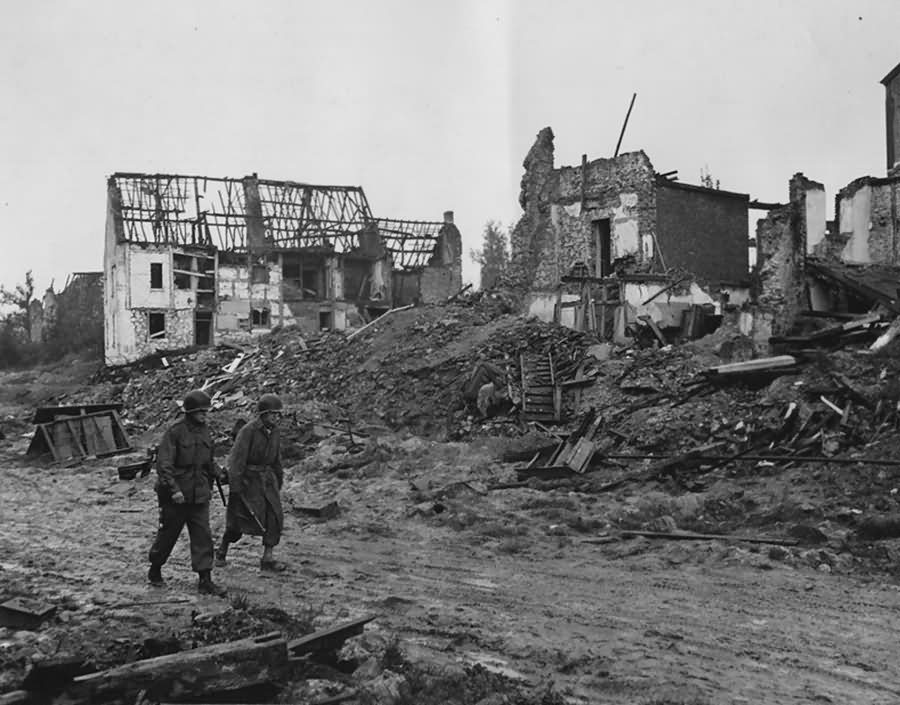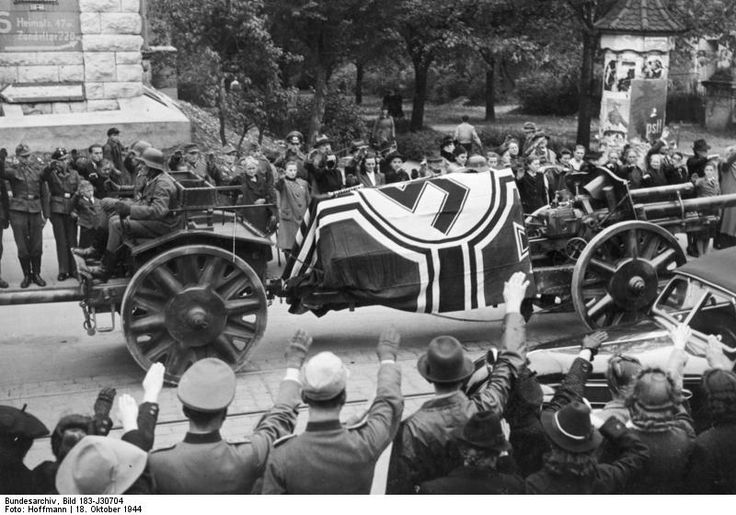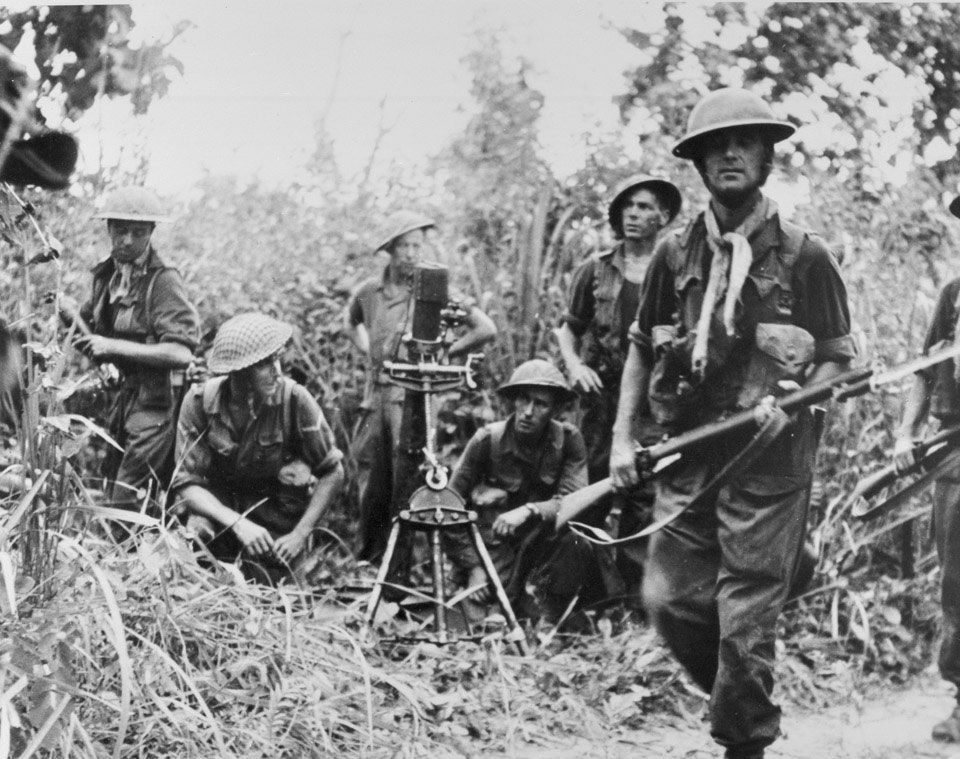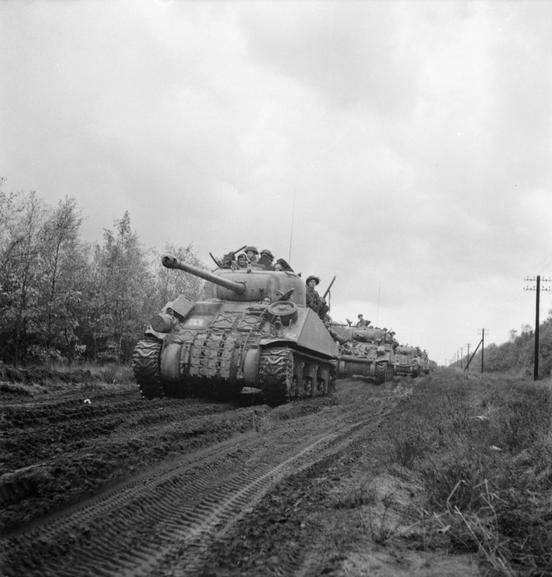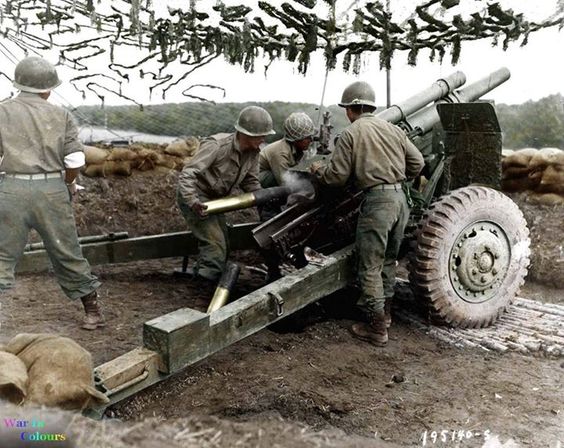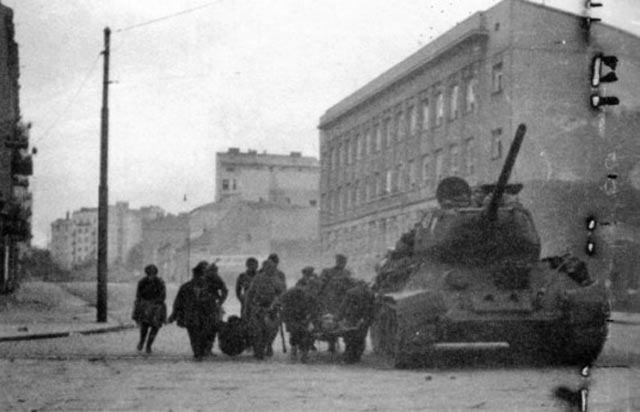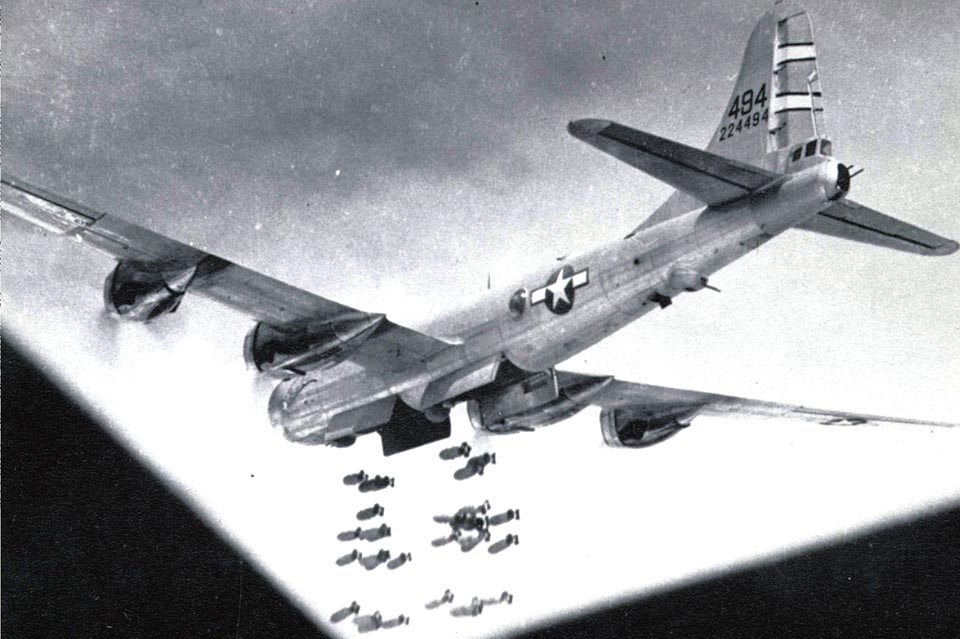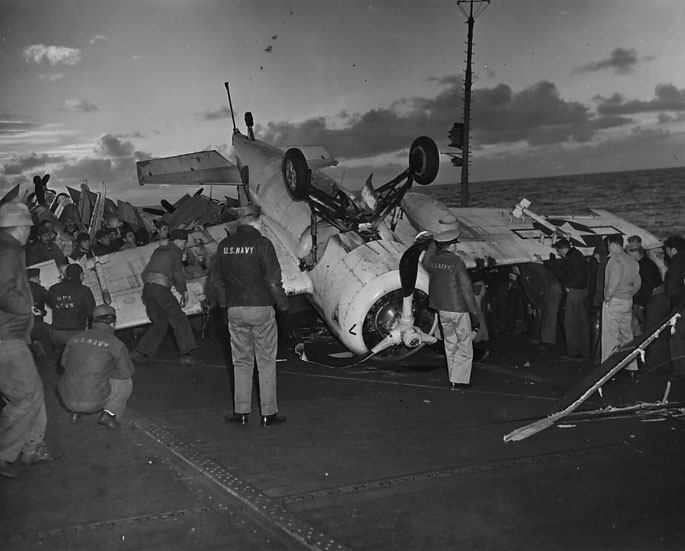Air Operations, CBI
BURMA- 6 10th Air Force B-25s attack bridges at Meza and Namhkai.
- 6 B-25s attack two bridges at Wuntho.
- 21 10th Air Force P-47s support Allied ground forces around Mohnyin.
- 13 P-47s attack the Mingaladon airfield at Rangoon.
- 8 P-47s attack two bridges at Wanling.
- 6 P-47s attack Japanese Army troops near Hwemun.
- P-47s from the 33rd Fighter Group and 2nd Air Commando Group down 2 Ki-43 'Oscar' fighters in an engagement over Rangoon and the Mingaladon airfield there between 1015 and 1055 hours.
- 14th Air Force P-51s and P-40s mount more than 100 effective sorties against numerous targets in broad areas south of the Yangtze River.
Air Operations, East Indies
Due to bad weather, only 8 of more than 120 FEAF B-24s dispatched, escorted by 8 P-38s of 75 XIII Fighter Command fighters dispatched, are able to attack oil facilities at Balikpapan, Borneo without loss. Also FEAF B-25s and fighter-bombers attack Amboina Town, Liang on Amboina, Namlea on Boeroe, and targets of opportunity on Djailolo Island and around Wasile Bay.
[Air Operations, Europe
RAF BOMBER COMMANDDaylight Ops:
- This is the first major operation by No. 3 Group in the new independent role which its commander, Air Vice-Marshal R Harrison, has been granted. Approximately one third of the group's Lancasters are now fitted with the G-H blind-bombing device and No. 3 Group are to operate on days when the ground is concealed by cloud but when the cloud tops do not exceed 18,000ft. Aircraft with G-H have their tail fins painted with a prominent design. Aircraft without G-H find a G-H 'leader' to follow into the target area and bomb when that aircraft bombs. G-H is a relatively accurate, easy-to-operate and very useful device and No. 3 Group are to make good use of it in the remaining months of the war. The device has been used before, but not by a large force. Air Vice-Marshal Harrison requested that the almost unbombed and unimportant town of Bonn should be the target for this first operation, possibly so that post raid reconnaissance photographs can show the results of the first G-H raid without the effects of other bombing confusing the interpretation of the photographs. 128 Lancasters are sent. The raid appears to go well and only 1 aircraft is lost. The attack was a complete success. The heart of old Bonn is destroyed, with its university, many cultural and public buildings and a large residential area being burned out. The local report says that the home in which Beethoven lived is saved 'by the courageous actions of its caretakers'. 700 buildings are destroyed and 1,000 more seriously damaged.
- 1 Hudson is on a Resistance operation and there are 4 RCM sorties.
- There are no losses.
Minor Ops:
- 19 Mosquitos are sent to Hannover, 18 to Mannheim, 8 to Düsseldorf, 5 to Pforzheim and 4 to Wiesbaden.
- 1 Mosquito is lost on the Pforzheim raid.
GERMANY:
- Although several operations are canceled because of bad weather, 79 1st Bomb Division B-17s attack the Ford plant at Cologne.
- 39 2nd Bomb Division B-24s attack an industrial plant at Leverkusen.
- 300 3rd Bokmb Division B-17s attack Kassel.
- 30 1st Bomb Division B-17s and 30 2nd Bomb Division B-24s attack a marshalling yart at Cologne as a target of opportunity.
- 5 heavy bombers and 5 of 565 VIII Fighter Command escorts are lost
ITALY:
- 12th Air Force B-26s attack rail bridges at Padua and a warehouse.
- Fighters and fighter-bombers provide limites support for the US 5th Army.
- During the night, XII Fighter Command A-20s attack targets of opportunity around Bologna and Genoa.
YUGOSLAVIA:
- 38 15th Air Force P-38 dive-bombers attack Vinkovci.
Air Operations, Japan
4 28th Composite Bomb Group B-25s attack Suribachi and the Kurabu Cape airfield in the Kurile Islands.
[Air Operations, New Guinea
- V Bomber Command B-24s attack the airfields at Babo and Sagan.
- B-25s and fighter-bombers attack other targets on and around the Vogelkop Peninsula.
Air Operations, Philippines
- V Fighter Command P-38s attack road traffic, barges, and small vessels along Mindanao’s west coast.
- Aircraft from Task Group 77.4 escort carriers open the final preinvasion bombardment of the Leyte area with attacks against airfields in the Visayan Islands, Leyte, and northern Mindanao; aircraft from Task Group 38.1, Task Group 38.2, and Task Group 38.4 mount powerful attacks to neutralize Japanese air strength based on Luzon. Also, US 3rd Fleet units, including some air units, assume covering stations in the San Bernadino and Surigao straits.
- Task Force 38 F6Fs down 68 Japanese fighters over Clark Field and the Mabalacat airfield on Luzon, and the Manila area, and 4 search planes at sea, between 0613 and 1710 hours.
Allied Planning
The Joint War Plans Committee issues its strategic assessment titled 'Operations for the Defeat of Japan'. It notes of the importance of capturing Iwo Jima to assist in establishing an air and naval blockade of the Japanese home islands and contributing directly to the destruction of Japan's remaining air and naval strength in preparation for an invasion.
Gen Eisenhower meets with Gen Omar N. Bradley and Field Marshal Sir Bernard L. Montgomery in Brussels, Belgium, to discuss Allies operational objectives. All three commanders agree that Allied forces should reach the Rhine River before winter. With Antwerp still unavailable, the armies will have to be supplied through the Normandy beaches and Cherbourg. Eisenhower's objective is the Ruhr. The 1st and 9th Armies of Bradley's 12th Army Group will attack toward Aachen and cross the Roer River. 1st Army will mount the main effort to reach the Rhine south of Colobne. The 9th Army will support 1st Army's attack and protect the northern flank. The 1st Army will give 9th Army operational control of XIX Corps for this task. Once across the Roer, the two armies are to attack in the Rhine River in the area between Cologne and Krefeld. The British will clear the Reichswald and cross the Maas River to join with the 9th Army. 3rd Army is given the lowest priority for support.
[Burma
On the British XXXIII Corps front, the 5th Indian Div enter Tiddim.
[China
Roosevelt recalls Lt-Gen 'Vinegar Joe' Stilwell, Deputy Allied Supreme Commander, Southeast Asia, to Washington and tells Chiang Kai-shek that, while the Americans do not actually insist on taking over command of the Chinese army, Gen Albert C. Wedemeyer would be available to act as Chief of Staff. The proposal is accepted.
[Diplomatic Relations
Franco sends a letter to Churchill proposing a Spanish-British alliance to combat what he calls 'the insidious power of Bolshevism.' Churchill dismisses the notion immediately.
[Eastern Front
The offensive by the 3rd Belorussian Front against East Prussia continues against bitter German resistance.
Belgrade is on the point of falling into the hands of the Russians and the partisans, while the German Army Group F under Maximilian von Weichs hastens the pace of its retreat from the Balkans.
Moscow announces that Red Army units from Ivan Petrov's 4th Ukraine Front have entered Czechoslovakia after crossing the Carpathian passes from Poland. They meet opposition from the German 1st Panzer Army.
FINLANDThe second phase of the Soviet Petsamo-Kirkenes Offensive begins with attacks by the CXIX and CXXXI Rifle Corps toward the Norwegian border. The 24th Rifle Div crosses the border and penetrates 3.1 miles into German positions.
NORTHERN SECTORKremeny falls to the 1st Shock Army as it drives west from Riga. However, the 16th Army has established strong defenses around Tukums and halts the Soviet drive.
CENTRAL SECTORThe 3rd Belorussian Front continues its attacks into East Prussia but meets fierce German resistance.
[Germany, Home Front
From now on all able-bodied males between the ages of 16 and 60 are to be liable for conscription into the home-defense force, the Volksturm. Himmler speaks at the first parade and calls on every German to resist the impending invasion by guerilla tactics. They must fight 'like werewolves. . . Every house, every ditch. . . every cluster of trees will have to be defended.'
[Greece
The Greek exile government returns home. Santorini and Scarpanto are occupied by British forces and the port of Patras is opened to shipping.
[Italy
The advance of the II Corps is still slow. In the 8th Army sector, the 5th (Kresowa) Div of the Polish II Corps enters Galeata without opposition. The 10th Indian Div of the British V Corps is ordered to attack across the Savio River.
[Pacific
- The US submarine Bluegill (SS-242) sinks the Japanese army cargo ship Arabia Maru (9480t) and Chinzei Maru (1999t) and merchant cargo ship Hakushika Maru (81506) in the South China Sea west-southwest of Manila.
- The US submarine Raton (SS-270) sinks the Japanese army cargo ship Taikai Maru (3812t) and army cargo ship Shiranesan Maru (4739t) in the South China Sea southwest of Luzon.
Palau Islands
The fighting still goes on in the Mount Umurbrogol area on Peleliu and against the little Japanese pocket on Angaur Island.
[Philippines
While the 3 task groups with 13 aircraft carriers of the US 3rd Fleet hammer the northern part of Luzon and the Manila area, a squadron of cruisers commanded by Rear-Adm Jesse B. Oldendorf shells the coastal defenses of the island of Leyte. Japanese ships sunk in the carrier strike include the auxiliary submarine chaser No. 95 and transports Nos. 135 and 136. The Japanese, already aware of the impending American landing, attack the invasion fleet with all the forces they can muster, damaging the American fast transport Goldsborough (APD-32).
Japanese Imperial Headquarters orders the putting into effect of Operation SHO-GO ('VICTORY'), a decisive action against the American land and naval forces about to invade Leyte.
[Western Europe
Gen Raymond S. McClain replaces Gen Charles H. Corlett in command of the US XIX Corps.
At a generals' conference in Brussels Eisenhower describes his plans for future operations on the Western Front. The efforts of the 21st Army Group, and in particular of the Canadian 1st Army, must be concentrated on the liberation of the port of Antwerp. The British 2nd Army is then to advance southeast between the Meuse and the Rhine, starting about November 10, to support the advance of the American 1st Army across the Rhine in the area of Cologne, an operation planned for between November 1 and 5. The US 9th Army after protecting the southern flank of the 1st Army in its advance up to the Rhine, will take part in the capture of the Ruhr.
At Aachen the Americans counter German efforts to break ou by renewing their offensive.
In the US 7th Army sector, the 36th Div of VI Corps captures part of Bruyères.
[Images from October 18, 1944
|
|
|
|
|
|
|
|
